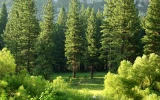Fastest Growing Timber Trees That Earn the Most Too
Growing timber trees can be a profitable venture, but waiting for them to mature can be a long and arduous process. Fortunately, there are fast-growing timber trees that can be harvested in a shorter amount of time. In this article, we'll explore the fastest-growing timber trees that can help increase your profits in a shorter amount of time.
Some of the fastest-growing timber trees are the Hybrid Poplar tree (up to 8 feet per year), Eucalyptus tree (6–8 feet per year), Black Locust (5–6 feet per year), Northern Red Oak (3–4 feet per year), and Douglas Fir (2–3 feet per year).
Hybrid poplar can reach maturity in as little as six years and has a high yield, with one acre producing up to 6,000 board feet of lumber. Let's see how each of these fast-growing timber trees can also become quickly profitable.
Summary
- Black locust trees are fast-growing timber trees that can grow up to 100 feet tall and have a trunk diameter of up to 3 feet.
- Hybrid poplar trees can be grown on a large scale and harvested every few years, providing a continuous supply of timber for various purposes.
- Douglas Fir trees can grow up to 2 feet per year, which means that they can be harvested for lumber in as little as 30 years.
- If you want fast-growing timber that is relatively easy to cultivate and maintain and is resistant to many pests and diseases, eucalyptus trees are your best option.
- If you're planning to build furniture or flooring, you may want to avoid using wood from fast-growing species like poplar, as it tends to be softer and less durable than hardwoods like oak or maple.

On this page:
The Top 5 Fastest Growing Timber Trees Which Earn The Most
If you're looking to start a timber plantation or want to grow trees for commercial use, you might want to consider the growth rate of the trees.
The faster the tree grows, the faster you can harvest and sell it for profit. Below is a table showing the top 5 fastest-growing timber trees that can help you earn the most:
| Tree Type | Growth per Year | Amount of Board Foot Produced per Acre | Estimated Annual Profit per Acre |
|---|---|---|---|
| Hybrid Poplar | 8 feet | Up to 6,000 board feet | $5,000 - $10,000 |
| Eucalyptus | 6-8 feet | Up to 8,000 board feet | $8,000 - $15,000 |
| Black Locust | 5-6 feet | Up to 4,000 board feet | $3,000 - $7,000 |
| Northern Red Oak | 3-4 feet | Up to 2,000 board feet | $1,500 - $3,000 |
| Douglas Fir | 2-3 feet | Up to 6,000 board feet | $4,000 - $8,000 |
Hybrid Poplar can grow up to 8 feet per year
Hybrid Poplar is one of the fastest-growing trees which is a cross between the Eastern Cottonwood and the Black Poplar, making it a hardy and adaptable tree.
It can reach maturity in as little as six years and also has a high yield, with one acre of hybrid poplar producing up to 6,000 board feet of lumber. It's considered to be one of the most profitable hardwood species of trees.
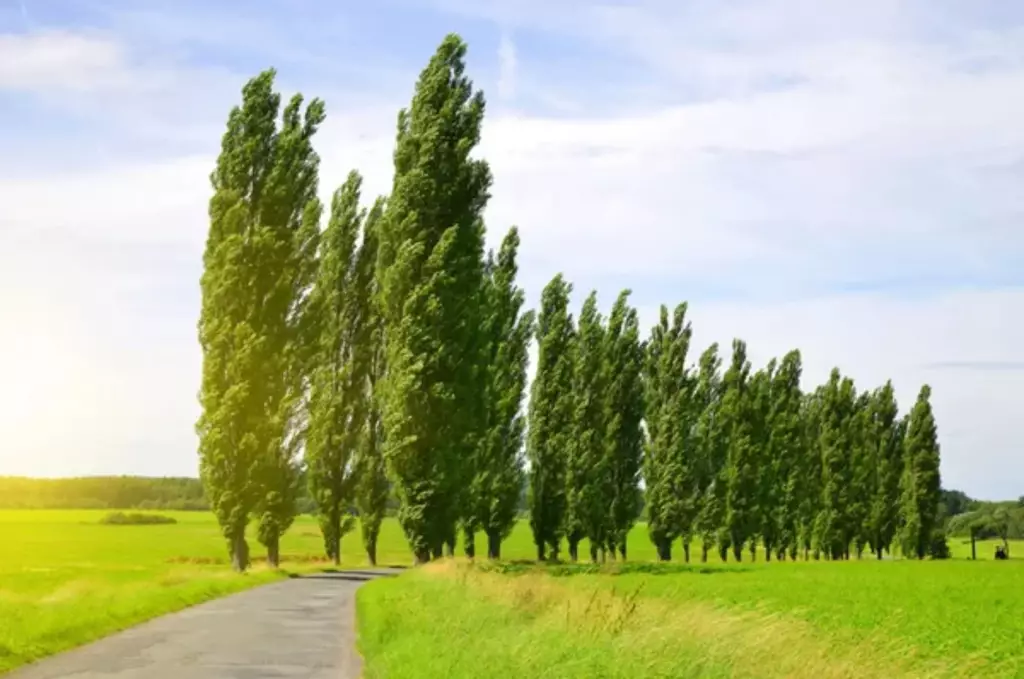
One of the main advantages of hybrid poplar is that it is a renewable resource that can be harvested in a sustainable manner. These trees can be grown on a large scale and harvested every few years, providing a continuous supply of timber for various purposes.
The wood from these trees can be used for a variety of purposes, including furniture, paper, and construction materials. It is also used for pulpwood, pallets, and other wood products. Additionally, it can be used to produce biofuels, making it a valuable resource for the energy industry.
Eucalyptus can grow up to 6-8 feet per year
Eucalyptus are known for their rapid growth and high yield of wood, making them an attractive option for timber production. An acre of Eucalyptus trees can make $8,000 - $15,000 annual profit.
These are native to Australia but have been widely planted in other parts of the world including South America, Africa, and Asia.
They can grow quickly due to their ability to extract water from deep in the soil, and their efficient use of nutrients.
They can grow up to 6-8 feet per year, and reach maturity in as little as 7-10 years, depending on the species and growing conditions.
The wood of eucalyptus trees is strong, durable, and resistant to decay, making it ideal for use in construction, furniture, and paper production. Additionally, eucalyptus oil, extracted from the leaves of the tree, is used in a variety of products including cosmetics, perfumes, and cleaning products.
However, there are also concerns about the impact of eucalyptus plantations on the environment, particularly in areas where they have been introduced as an invasive species. They can displace native vegetation, reduce biodiversity, and deplete water resources.
Black Locust can grow up to 5-6 feet per year
Black Locust is native to North America and is known for its hard and durable wood. It is widely planted as a timber tree due to its rapid growth rate, strong wood, and high resistance to pests and diseases.
It is also used in the production of honey as it produces fragrant and nectar-rich flowers. Black Locust trees can grow up to 100 feet tall and have a trunk diameter of up to 3 feet.

The wood of Black Locust is known for its strength, durability, and resistance to rot and decay. It is commonly used for fence posts, railroad ties, and outdoor furniture.
Black Locust is also used in construction and can be used as a substitute for tropical hardwoods, which are often harvested unsustainably.
Northern Red Oak can grow up to 3-4 feet per year
Northern Red Oak is native to North America and is known for its strong and durable wood. Northern Red Oak is used for timber production, furniture, and flooring.
It is also used in the production of wine barrels as it imparts a unique flavor to the wine. The tree can grow up to 90 feet tall and 50 feet wide, and it has a lifespan of up to 500 years. To know the value of large oak trees, you might find this article interesting.
It is also a popular choice for landscaping due to its attractive foliage and fall colors. However, it is important to note that while Northern Red Oak is a fast-growing tree, it still takes several decades to reach maturity for harvesting.
Douglas Fir can grow up to 2-3 feet per year
Douglas Fir is a type of coniferous tree that is widely known for its fast growth rate and its use as a timber tree. It is native to western North America and is commonly found in forests throughout the region.
Douglas Fir trees can grow up to 330 feet tall and have a trunk diameter of up to 7 feet. They are known for their straight, tall trunks and their thick, dense branches. The wood of the Douglas Fir is strong, durable, and has a beautiful reddish-brown color.
These trees are used for timber production, construction, and furniture. They are also used in the production of Christmas trees as it has a symmetrical shape and fragrant needles.
Douglas Fir is considered to be one of the most profitable softwood species for timber production because of its fast growth rate.
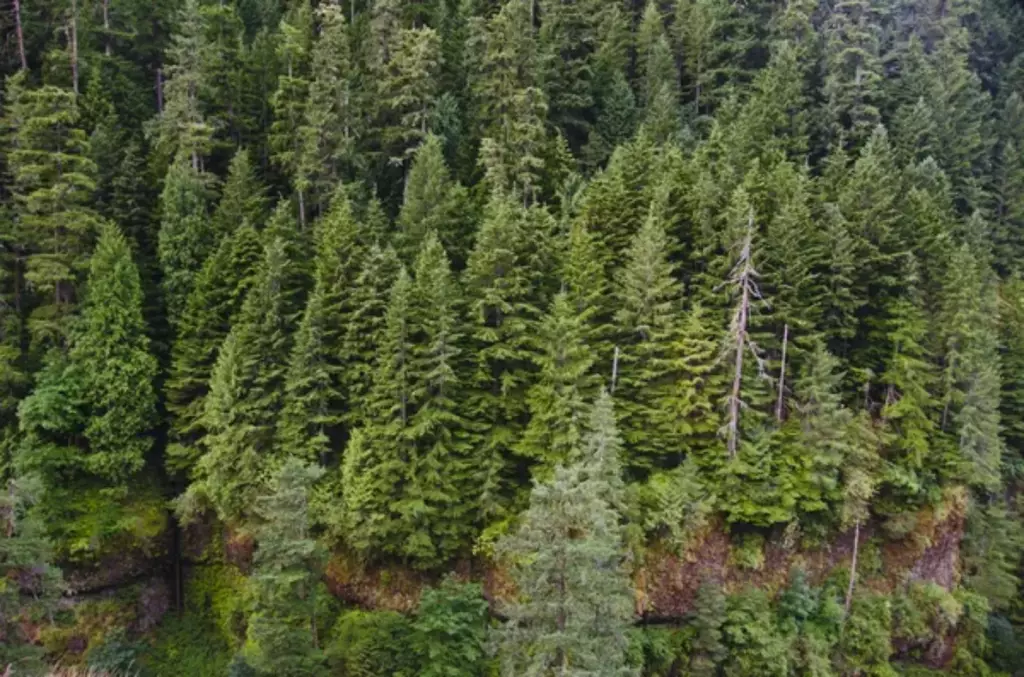
They can grow up to 2 feet per year, which means that it can be harvested for lumber in as little as 30 years. It also has a high yield, with one acre of Douglas fir producing up to 6,000 board feet of lumber.
Consider These When Choosing Fast-Growing Timber Trees
There are several factors to consider to ensure that you choose the right species for your needs, such as the following:
Different species of trees thrive in different climates and soil conditions
The table below shows different timber tree species and their climate and soil requirements:
| Tree Species | Climate | Soil Type |
|---|---|---|
| Douglas Fir | Cool and moist | Well-drained, acidic soils |
| Black Walnut | Temperate | Deep, fertile soils |
| Redwood | Coastal, mild | Moist, well-drained soils |
| Pine | Temperate | Sandy, well-drained soils |
| Teak | Tropical | Well-drained, loamy soils |
| Mahogany | Tropical | Deep, well-drained soils |
| Eucalyptus | Hot and dry | Well-drained, sandy soils |
| Oak | Temperate | Moist, well-drained soils |
Before choosing a fast-growing timber tree, see first which species are best suited for your region. You may want to consider factors like temperature, rainfall, and soil type to ensure that the trees you choose will grow well in your area.
Consider the quality of the wood produced by the tree
Some fast-growing species may produce weaker, lower-quality wood that is not suitable for certain applications. Here are some examples of the properties of the wood produced by some timber tree species based on your needs:
- If you're planning to build furniture or flooring, you may want to avoid using wood from fast-growing species like poplar or willow, as they tend to be softer and less durable than hardwoods like oak or maple.
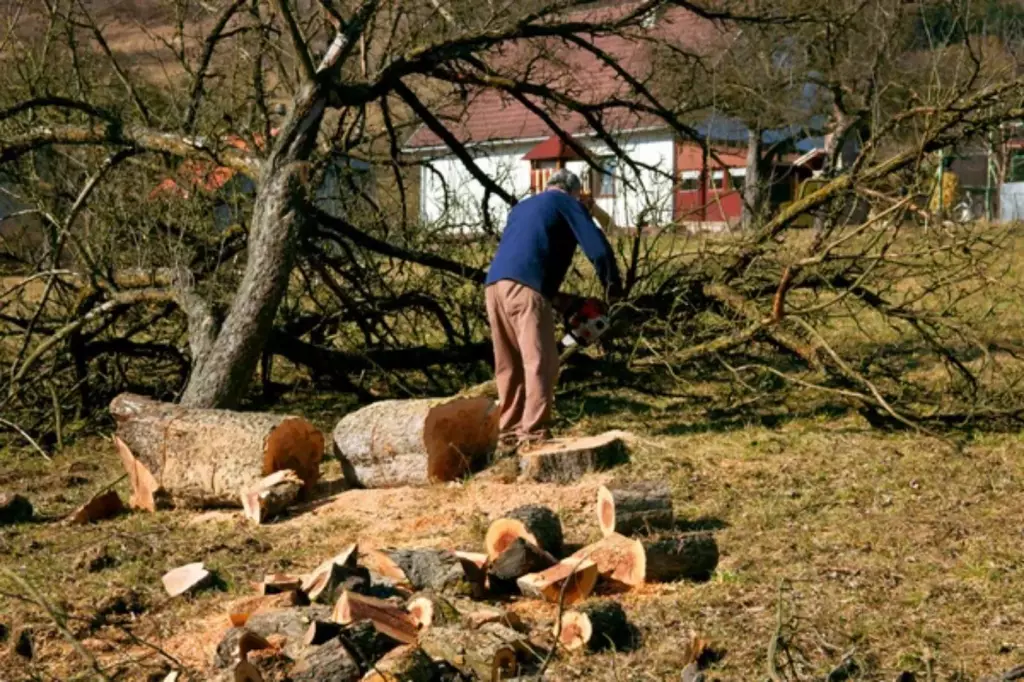
-
If you're looking for wood to use in paper production, you may prefer fast-growing species like eucalyptus or pine, as they can be harvested more quickly and efficiently than slower-growing hardwoods.
-
If you're interested in using wood for construction purposes, perhaps consider factors like strength, stiffness, and resistance to decay. Some species that are known for producing high-quality construction-grade wood include Douglas fir, southern yellow pine, and redwood.
-
If you're looking for wood to use in musical instruments, you'll need to consider factors like tone, resonance, and stability. Some species that are commonly used for this purpose include spruce, maple, and ebony.
Some species of trees are easier to cultivate and maintain than others
Some species of trees require less effort, time, and resources to grow and maintain. When selecting a fast-growing timber tree, try to also consider factors such as pest and disease resistance, tolerance to drought, and other environmental stressors, and ease of propagation.
For instance, some species of trees like eucalyptus, pine, and spruce are known for their fast growth rate and are relatively easy to cultivate and maintain. They are also resistant to many pests and diseases, making them an excellent choice for tree farms.
On the other hand, other species like oak and maple trees may take longer to grow and require more maintenance, such as regular pruning and fertilization. They can also be more susceptible to pests and diseases.
Consider the market demand
Even if a species grows quickly and produces a lot of wood, if there isn't a high demand for that wood, it may be difficult to sell it at a profitable price. This could result in a loss of time and resources invested in growing the trees.
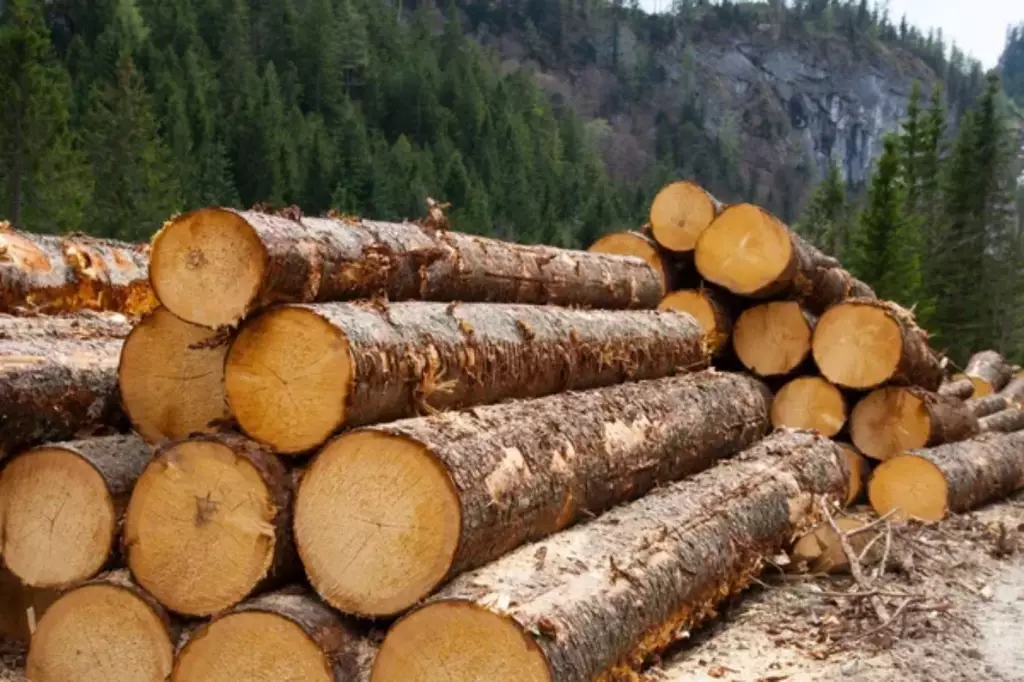
To avoid this, it's best to research the market demand for the species you're considering. This involves looking into factors such as the current supply and demand for the wood, the uses for the wood, and any potential competition from other wood sources.


